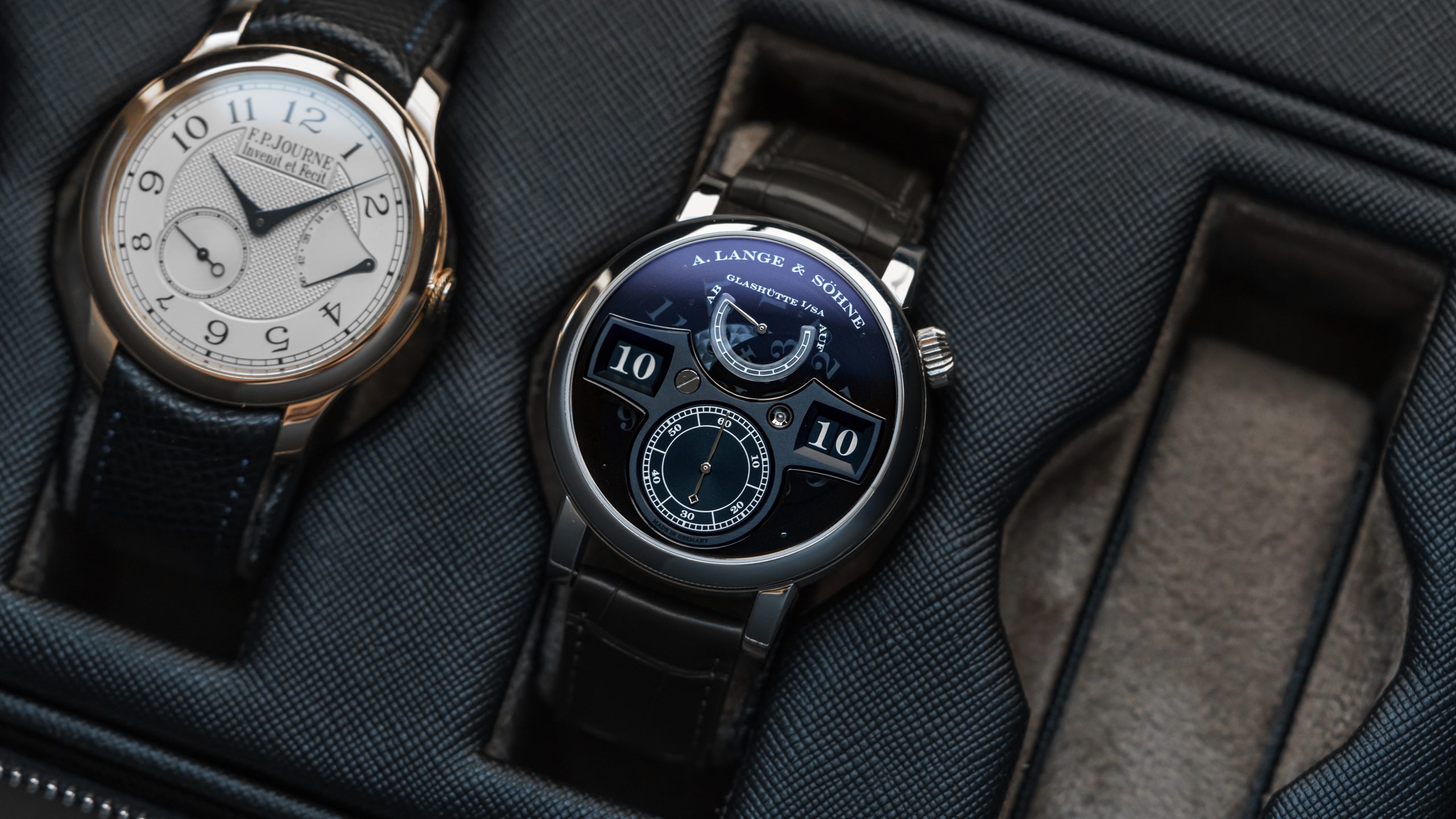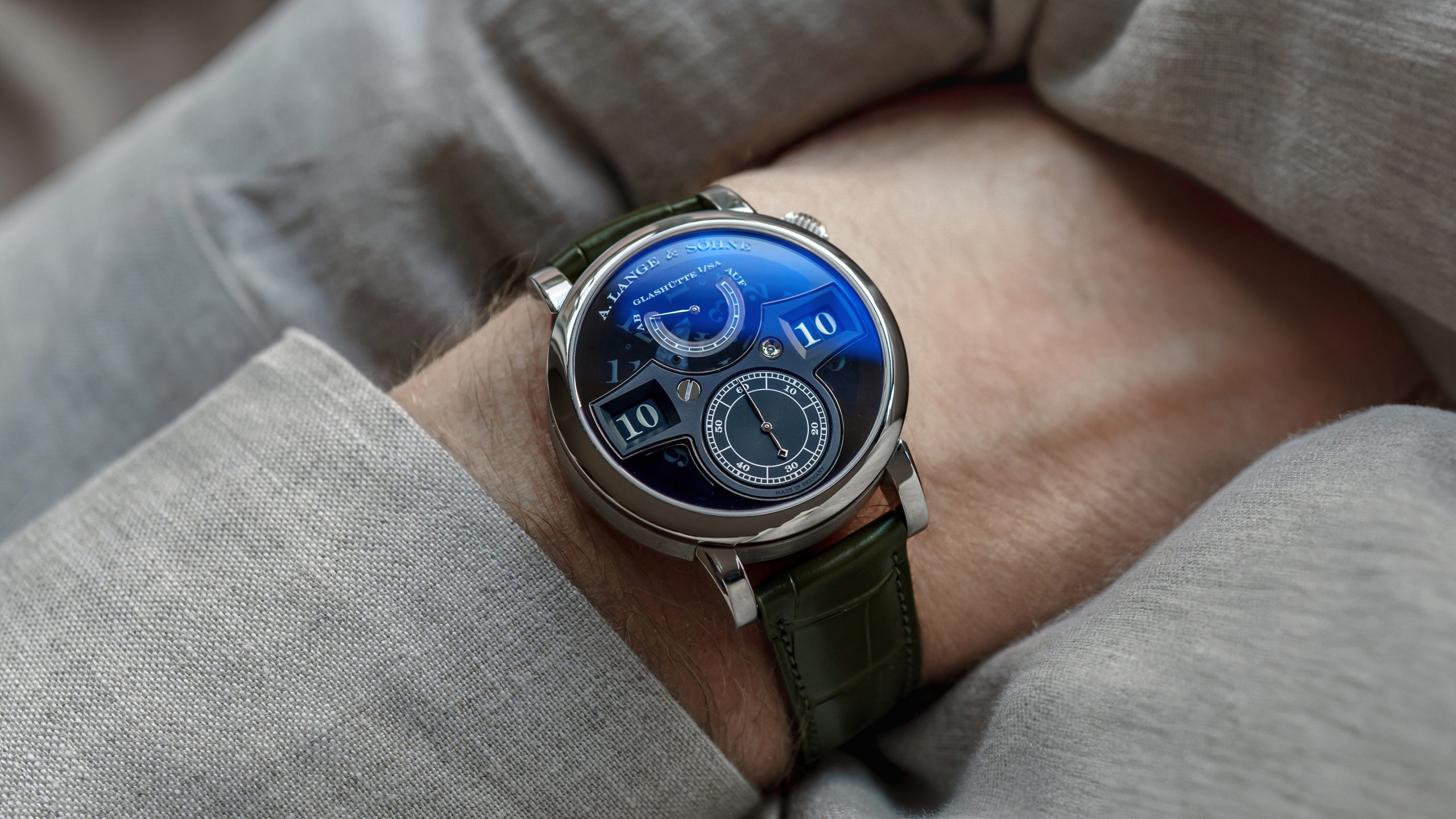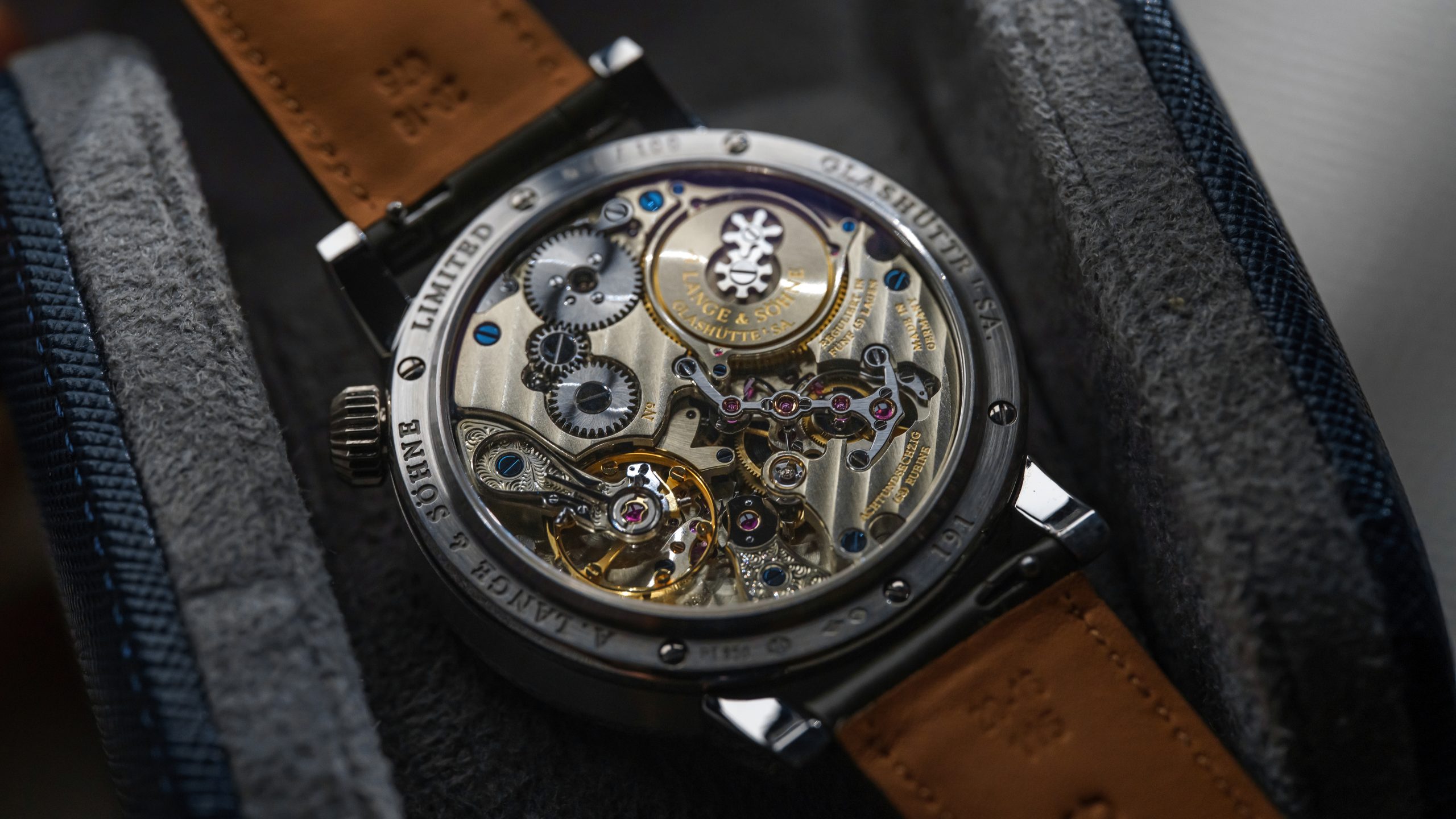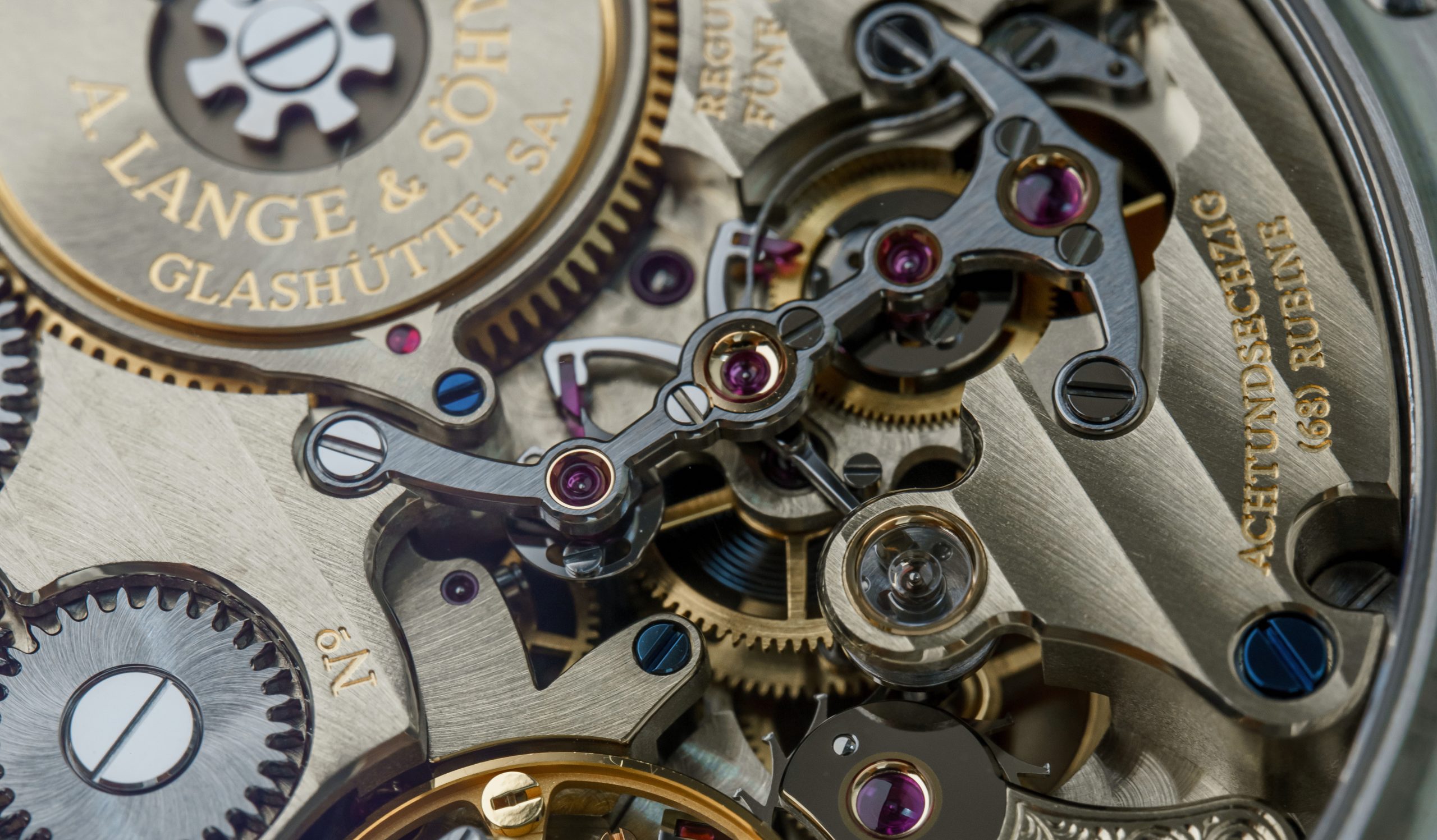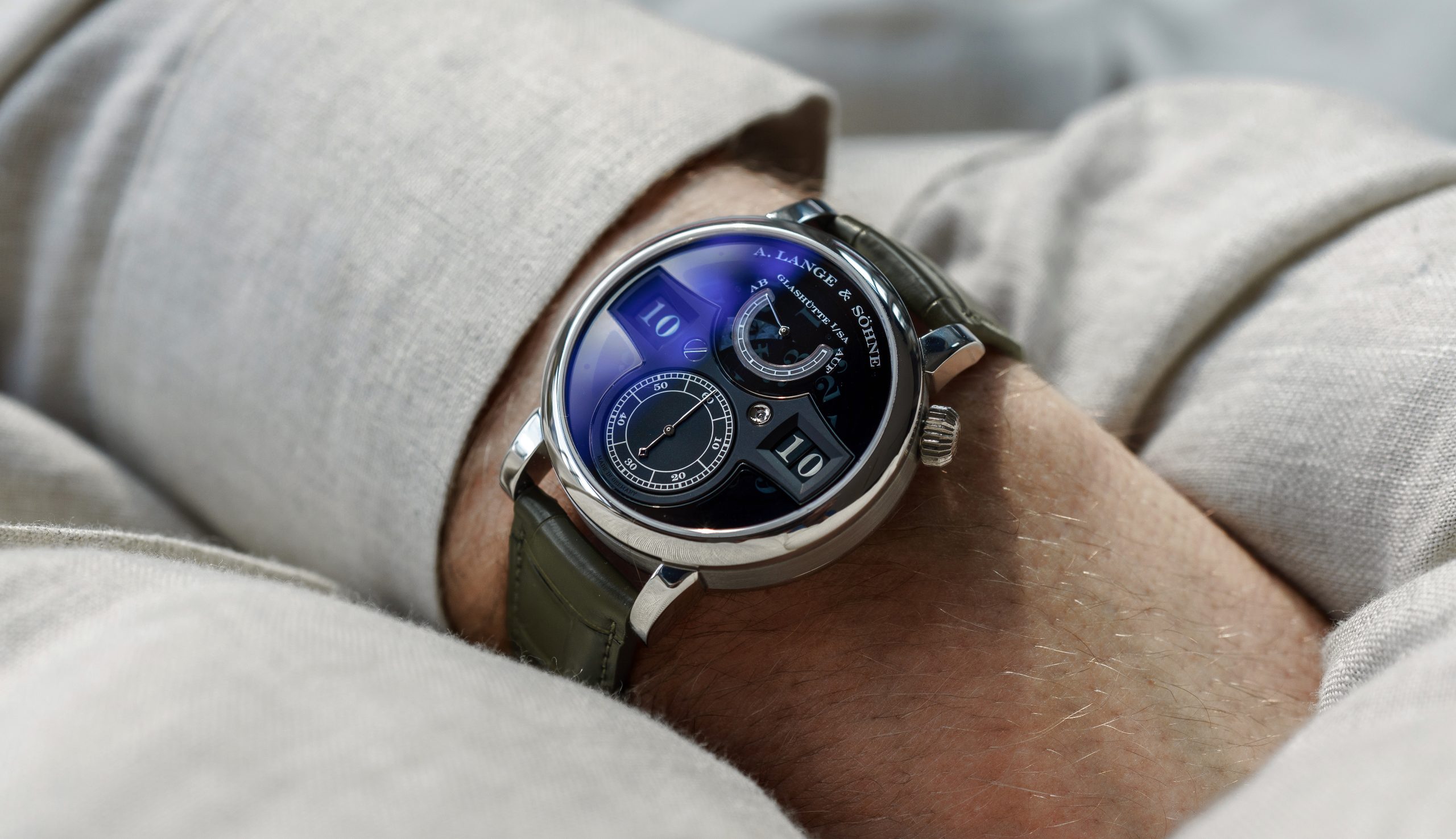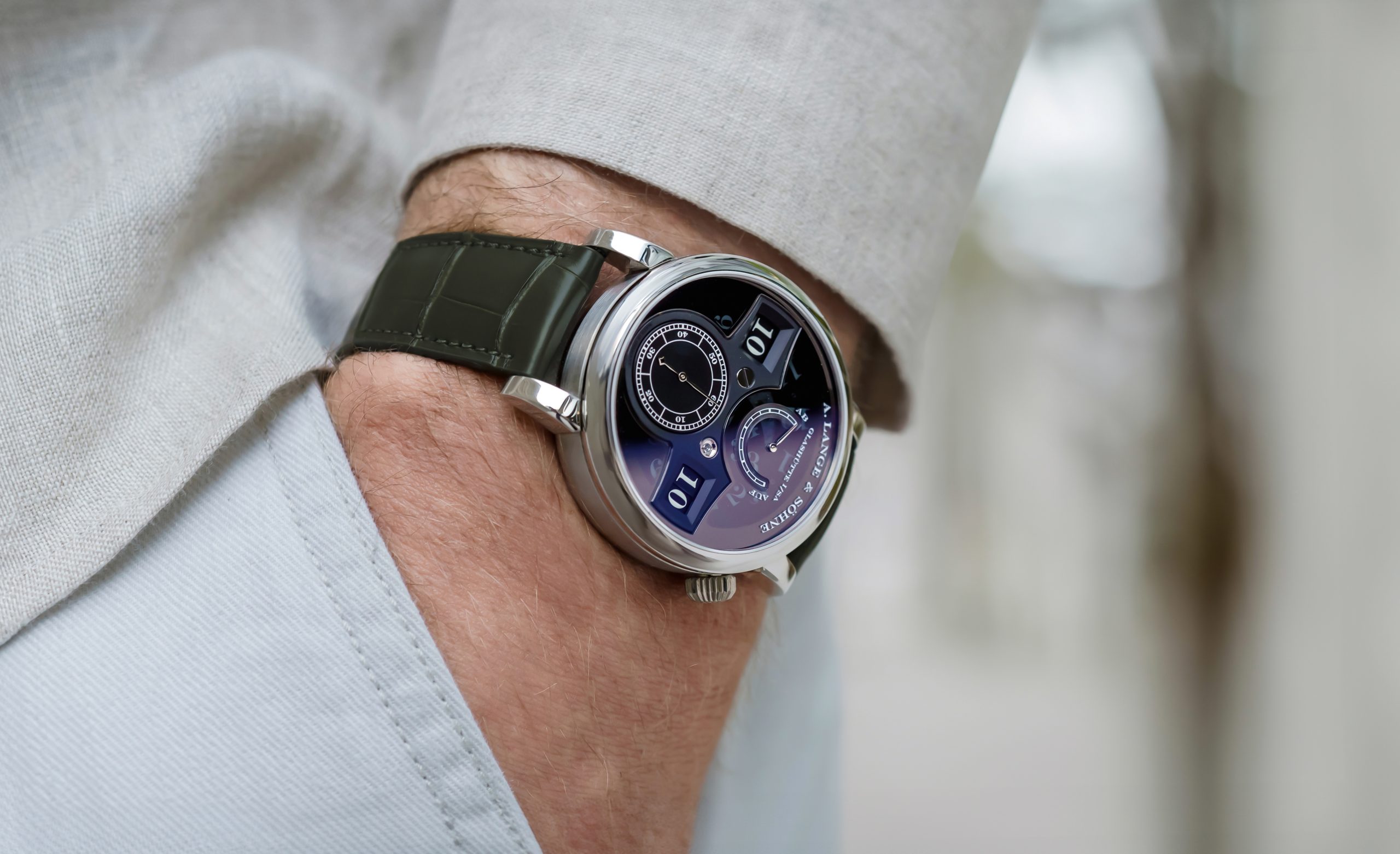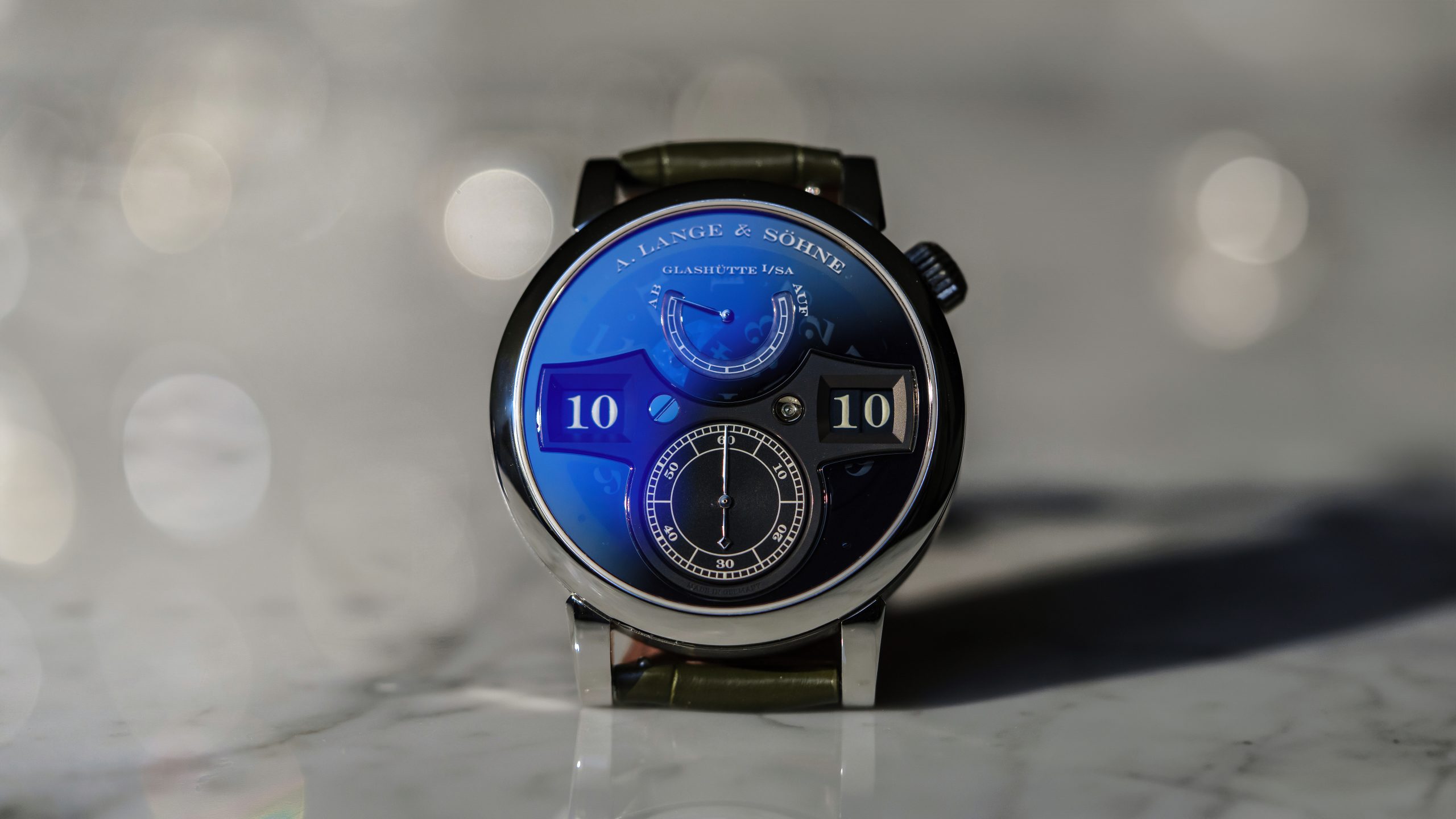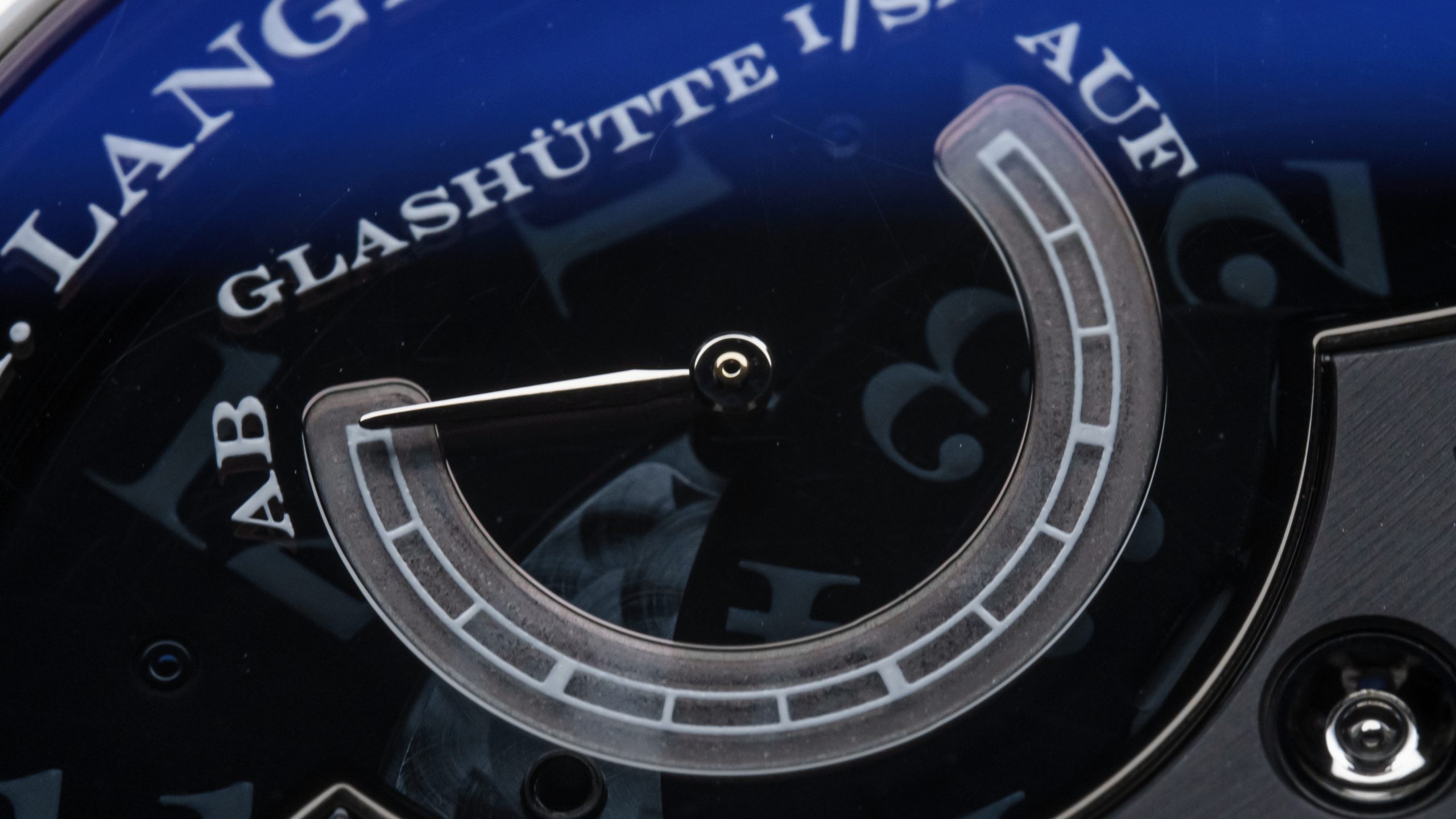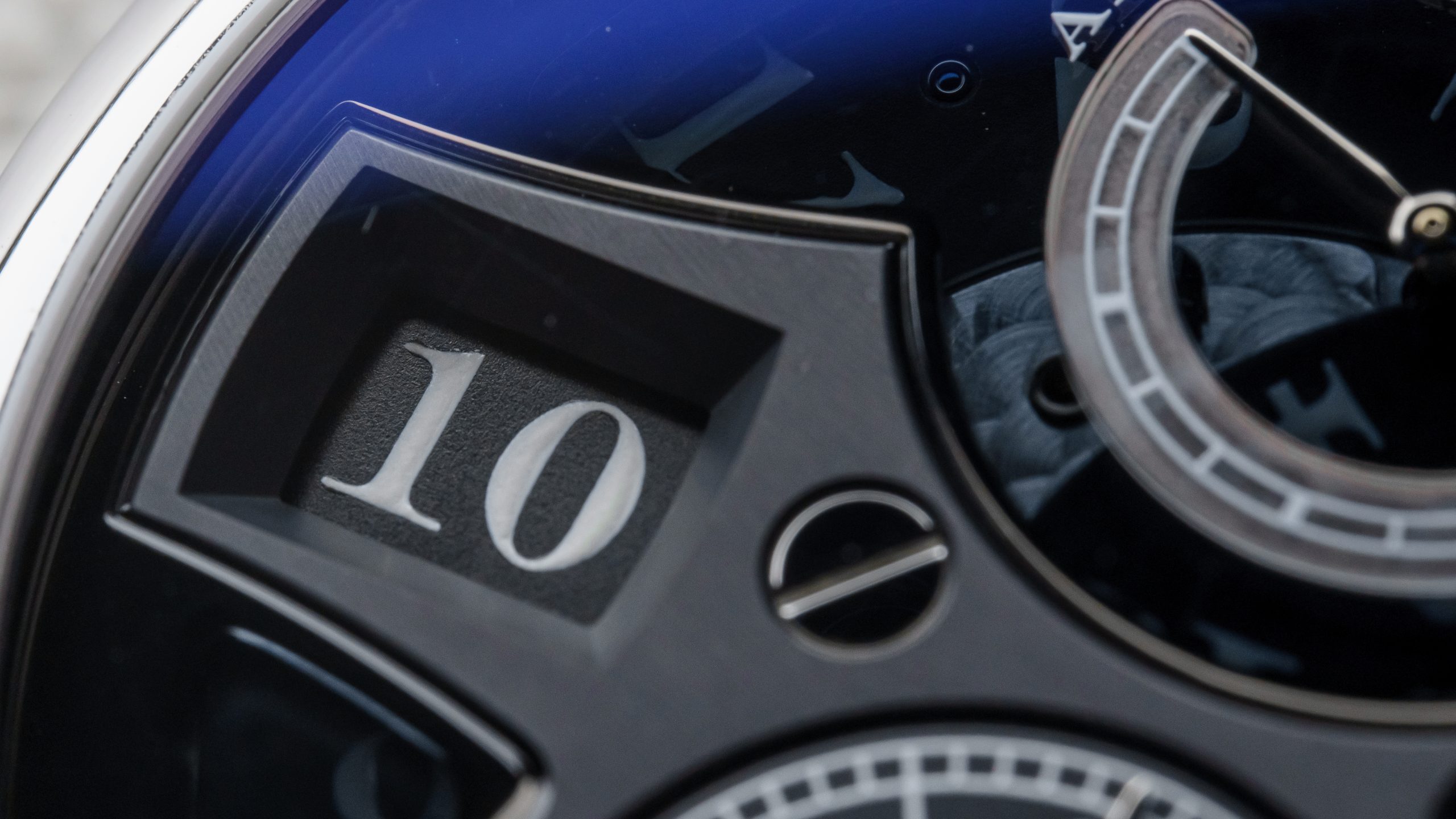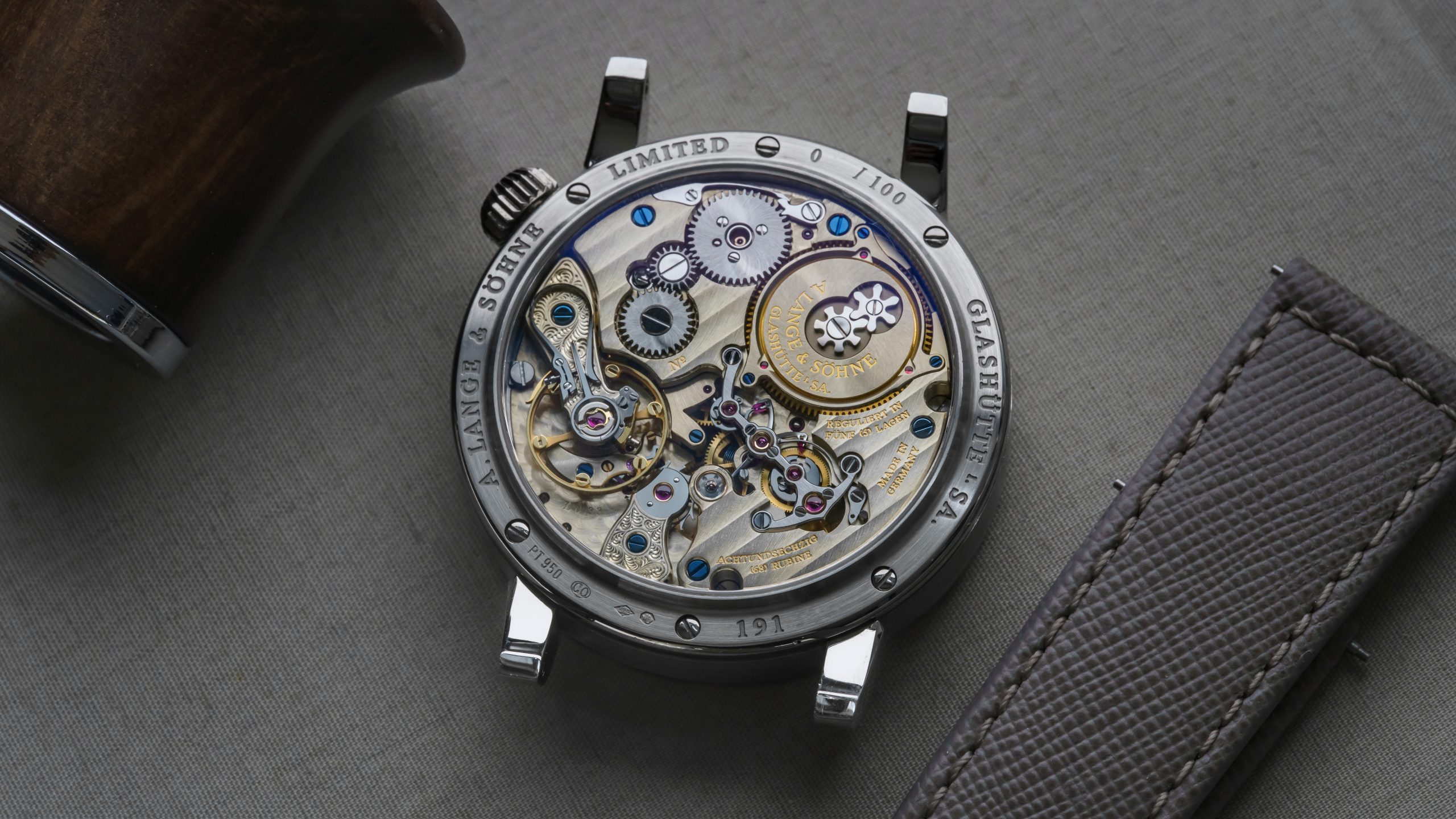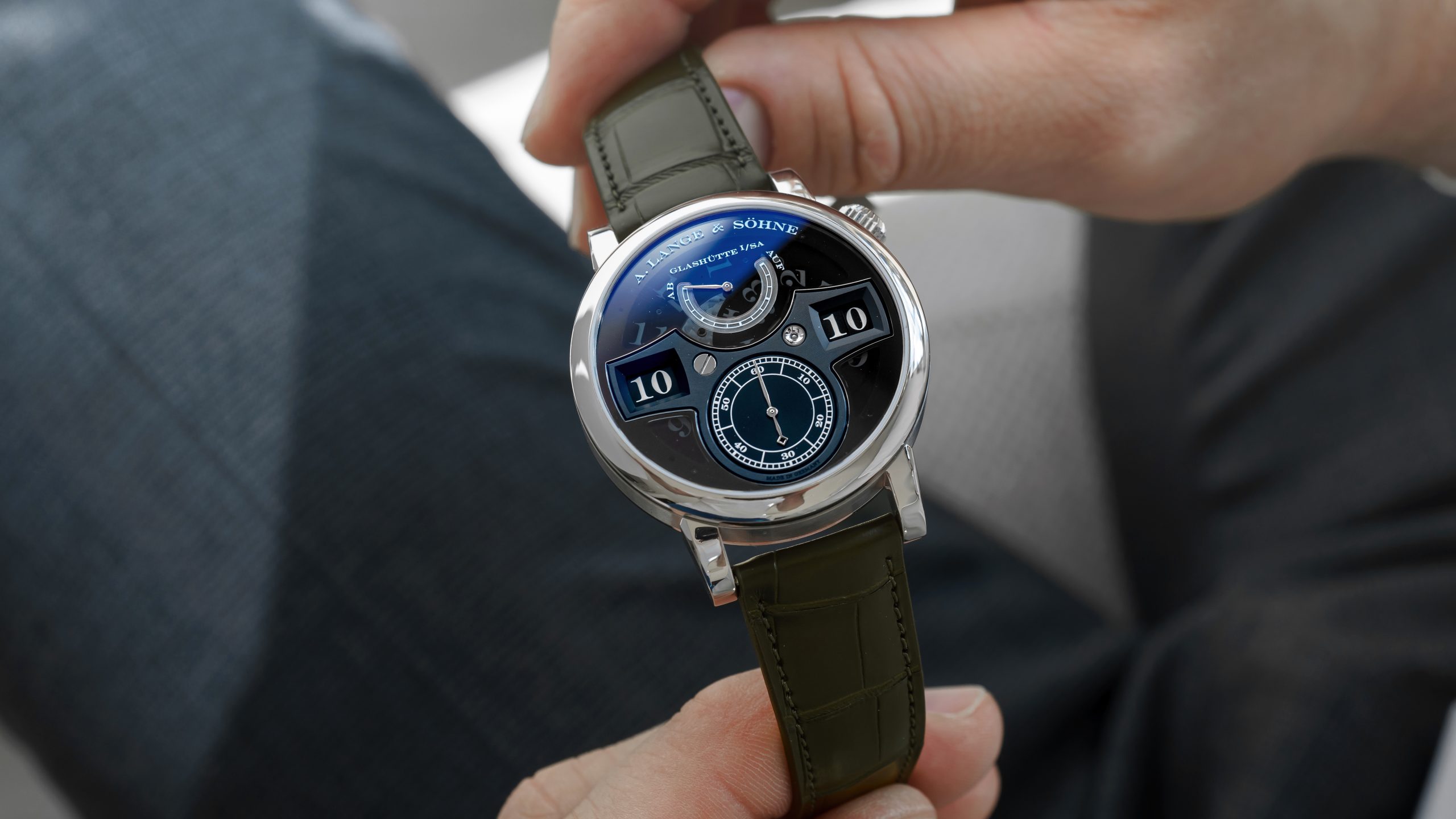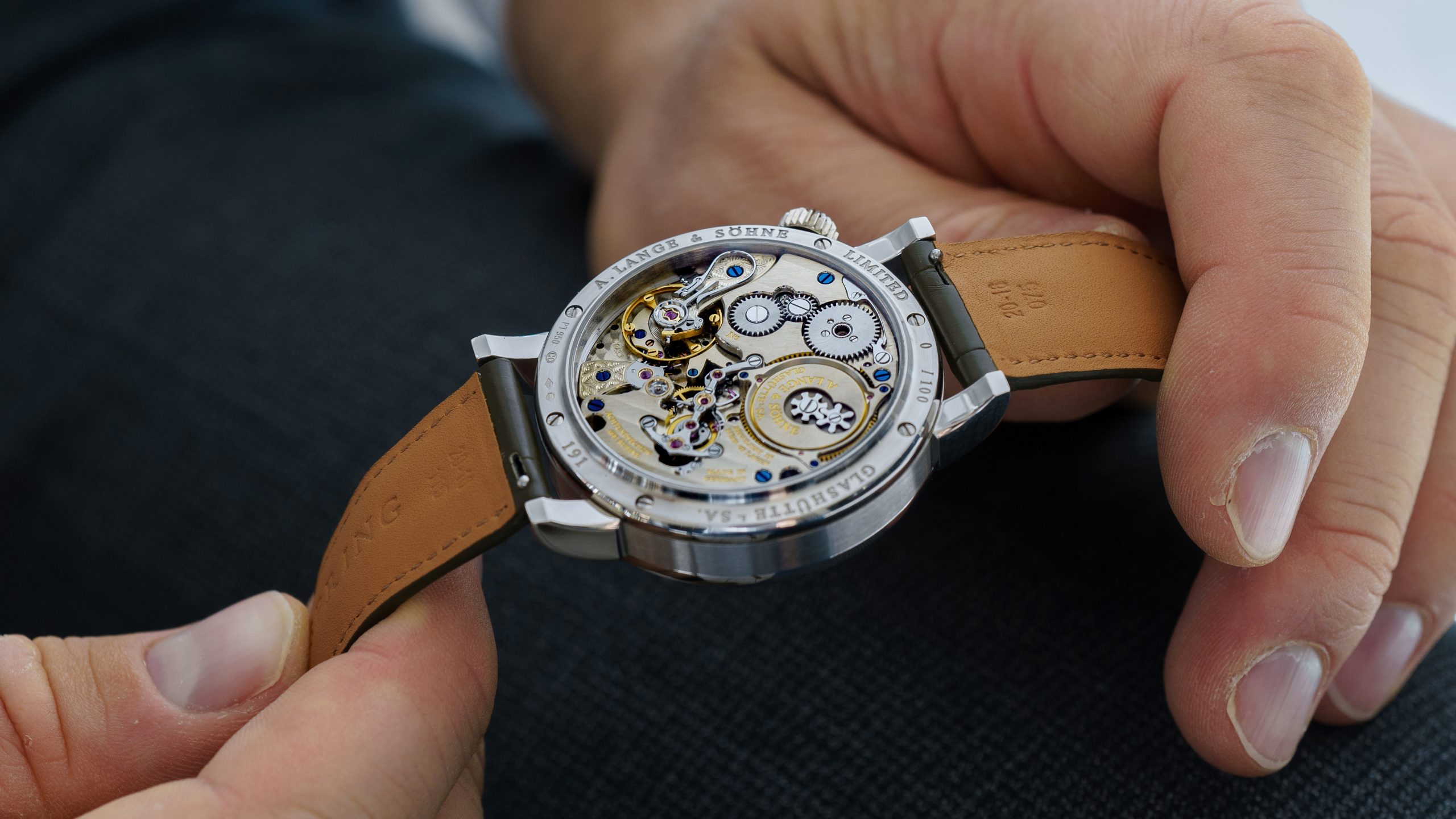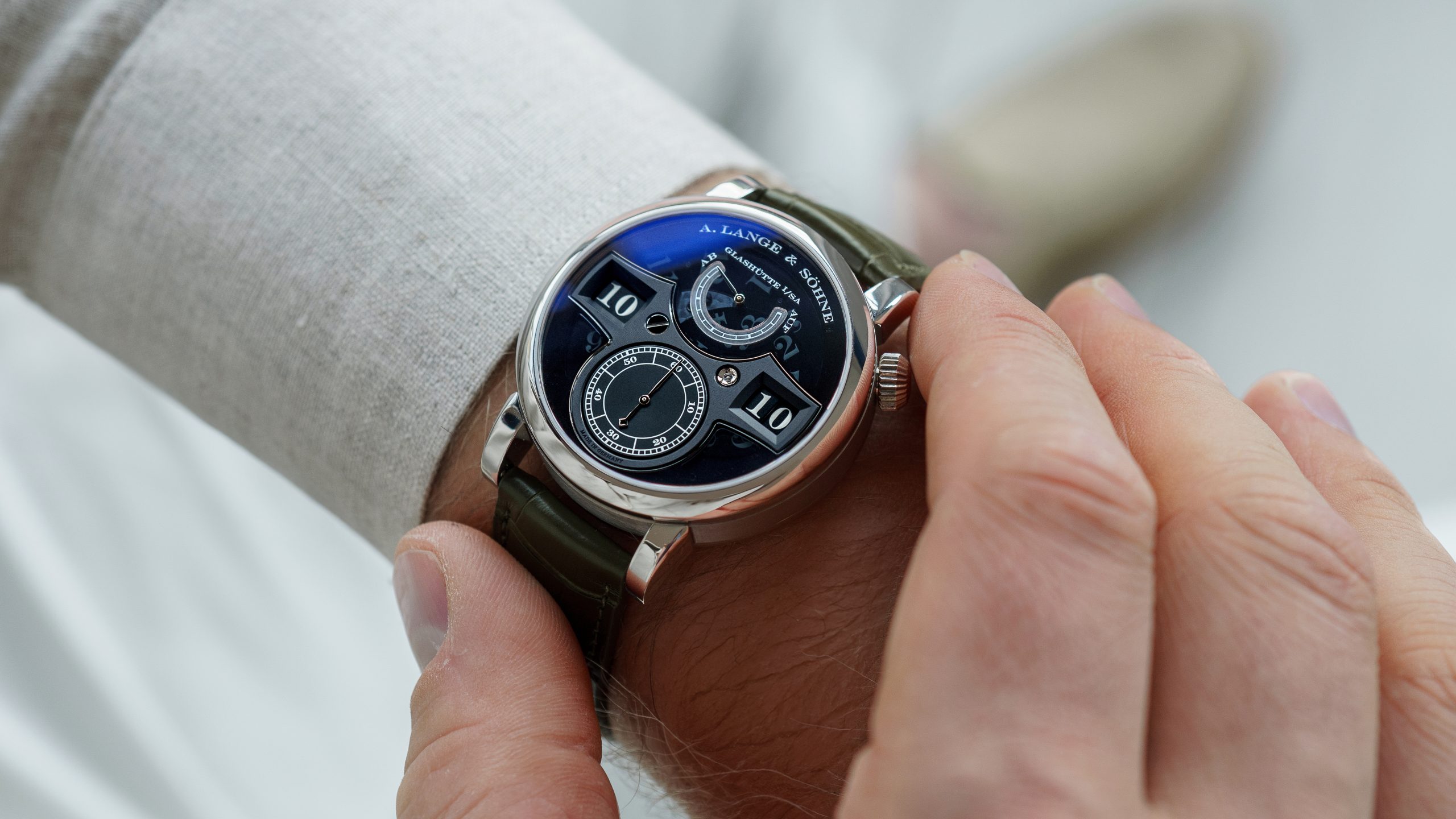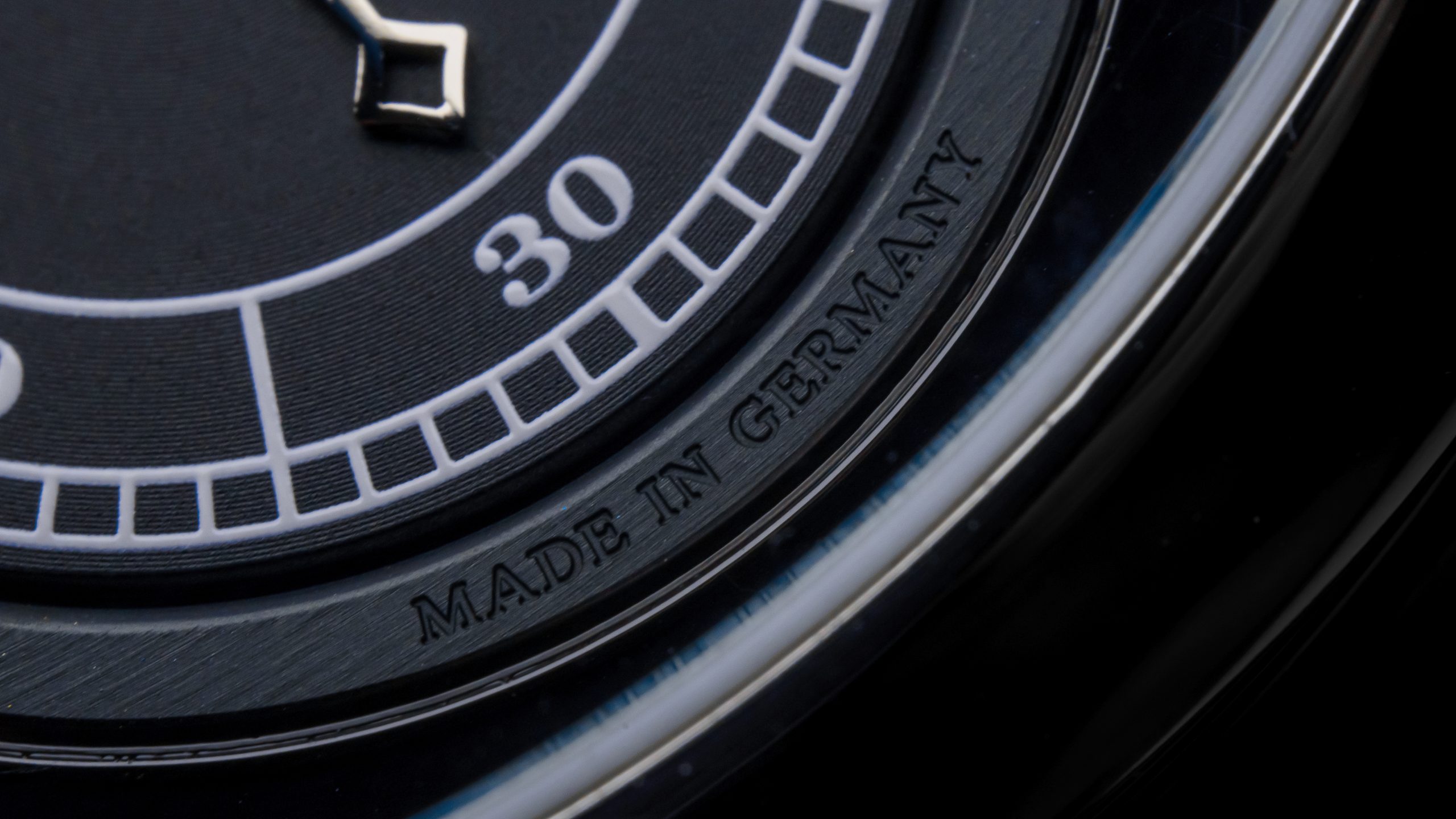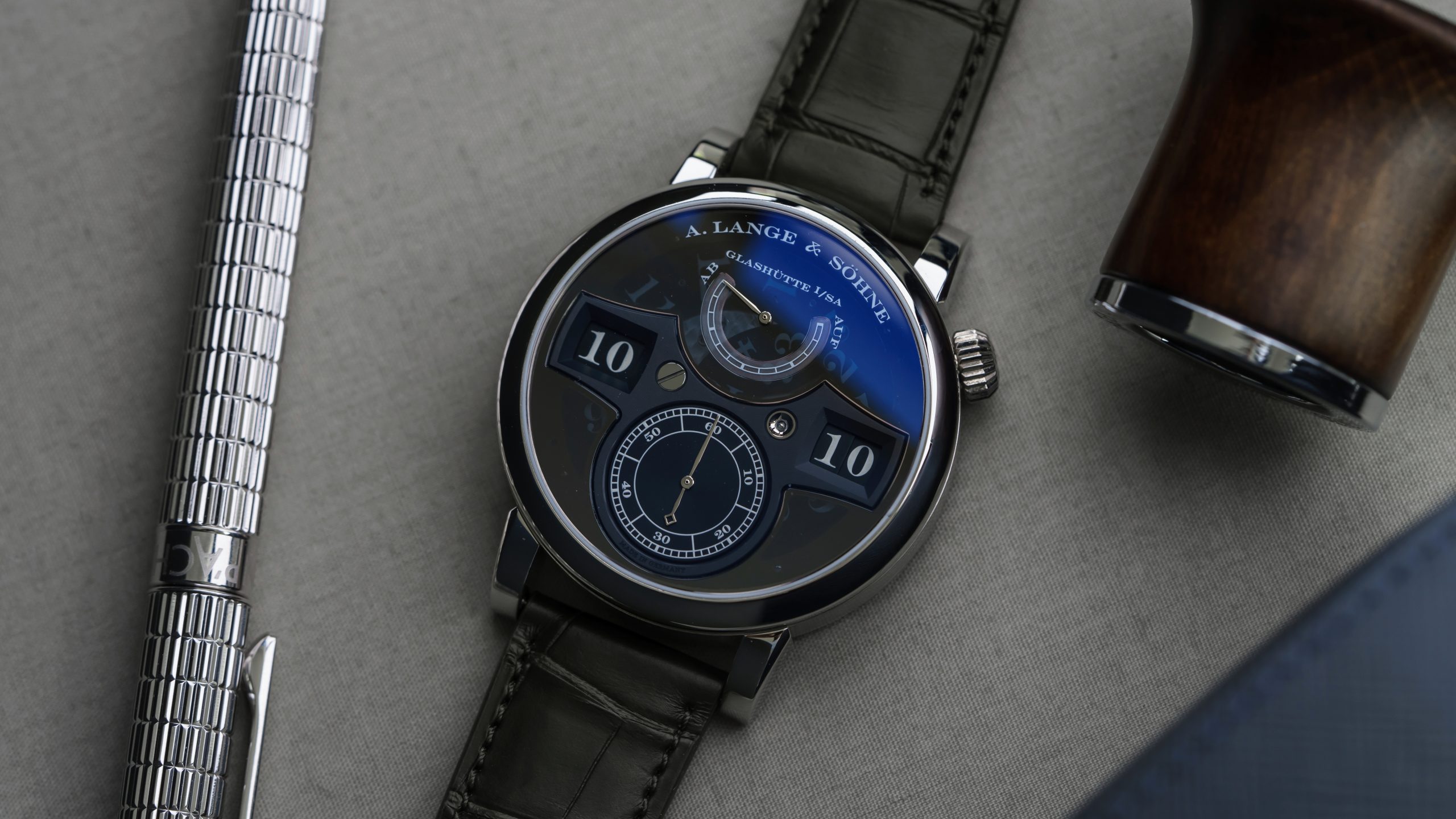In 2009, A. Lange & Söhne took home the top Aigulle d'Or award at the Grand Prix d'Horlogerie de Genève for the Zeitwerk in the year of its debut. Just a short year later in 2010, A. Lange & Söhne fanned the flames with a celebratory and thoroughly reworked Zeitwerk for their best clients. This is that watch: the first ever A. Lange & Söhne 'Lumen' model, a limited edition of 100 examples in platinum with a sapphire dial and luminous, exposed time discs. The reference it was given is 140.035, but it has since come to be known by collectors as the 'Phantom' for obvious reasons.
The Zeitwerk was inspired by the Dresden Opera House clock built by Johann Gutkaes with help of one Ferdinand A. Lange in 1841. Its mechanical 'Five-Minute' clock was the inspiration for the Lange 1 date window, but even moreso the Zeitwerk's inline apertures. It was Blümlein who first had the idea of creating a digital watch, but a separate team that carried out the challenge. That challenge required over 5 years of development, according to Anthony de Haas.
The jumping discs were made possible through the largest mainspring A. Lange & Söhne had made and a very intricate constant force remontoir, the work of Jens Schneider. Because it takes much more energy to turn all three discs than just one, a windflüge (windbrake in English) mechanism was invented to deplete excess energy when full power is not required. It works like a fan to bleed off the excess energy through air resistance and not damage the single disc with too much power. In wearing, you can feel a snap of energy when the remontoir releases its energy to move the massive discs. The manual Caliber L043.1 the debuted in the first Zeitwerk is like nothing else, which becomes obvious when you study the caseback with its anchor bridge that carries the constant force mechanism, escapement, balance wheel, and winding gears, all hand-finished to an exceptional standard. In 2009, this was the greatest shock Germany had ever sent to the Swiss watchmaking industry. Having studied many previous digital pocket watches and clocks, the decision was made to innovate in design with an exposed bridge on the dial, which gives the Zeitwerk its distinctive winged shape, penned by Nils Bode. The case was made as thin as was possible for all the mechanical complication, 41.9mm at 12.6mm thin. The unique crown at 2 was a direct consequence of movement architecture, while the rest was Lange's usually teutonic 3-piece construction with contrast finish.
The three pillars of Lange are the Lange 1, Datograph, and Zeitwerk. The Zeitwerk is by some margin the most technically innovative, but the Phantom takes that ambition much further. This was the most audacious aesthetic A. Lange & Söhne had ever dared create in 2010. Anthony De Haas, Director of Product for the original Zeitwerk, had the idea after trying and struggling to read the time on his own Zeitwerk at night. The obvious solution would be luminous discs, but as the Zeitwerk's discs change so frequently the numerals aren't exposed long enough to 'charge' in sunlight before going back behind the dial. The only possible solution was to allow the discs to charge through a smoked sapphire dial which allows only UV to penetrate.
The fundamental concept and solution created one of the most distinct, now legendary A. Lange & Söhne aesthetics. But this first Lumen is made by its details. Consider the power reserve scale at 12, which has to be engraved, frosted, and bevelled onto thin sapphire. The German silver, winged 'Time Bridge' of the dial was coated black, rather unusually for A. Lange & Söhne. The calibre L043.3 (not L043.1 found in the original) had to receive its own number as the changes were so drastic. For example, the top-side of the calibre had to be hand finished perfectly now too as, even under the smoked sapphire, components would occasionally be visible in direct light.
At release, the Phantom was an outlier, a brief flash of daring design choice in 100 examples from Germany. A. Lange & Söhne have since built upon the idea, but reserved the Lumen treatment for their most audacious technical projects such as the Datograph Perpetual Tourbillon. It is the more teutonic and reserved equivalent to a very limited skeletonized release of the Swiss. This monolithic, almost villainous aesthetic began in the Phantom, but is now one of the core identities for the most special of A. Lange & Söhne releases. The Phantom perfectly captures the dichotomy of Lange's austere yet revolutionary spirits in full measure, one of the most important and desirable watches made in the brand's developing years, equal parts Günter Blümlein and Anthony De Haas influence.
